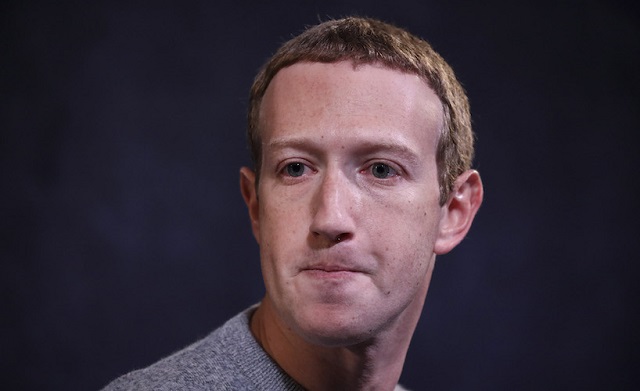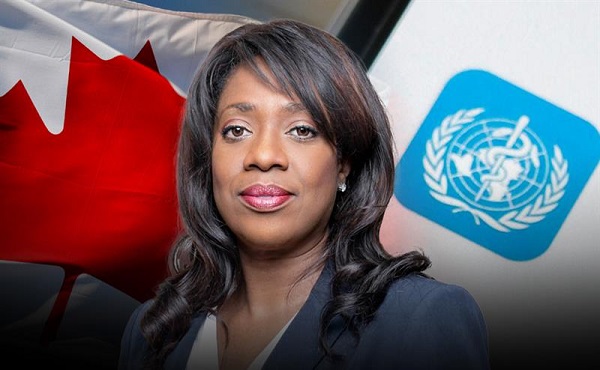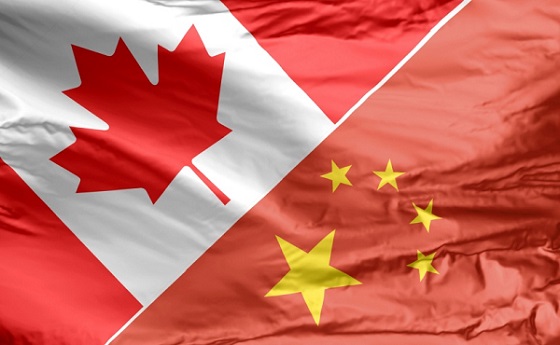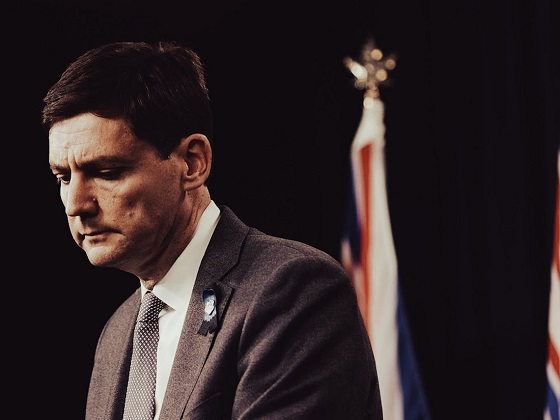International
New Mexico sues Meta, Mark Zuckerberg for facilitating child sex trafficking

From LifeSiteNews
New Mexico Attorney General Raúl Torrez concluded that Facebook and Instagram have become ‘prime locations’ for sexual predators to trade child pornography and ‘solicit minors for sex.’
New Mexico’s attorney general filed a lawsuit on Tuesday against Meta Platforms, the parent company of Facebook and Instagram, and its CEO, Mark Zuckerberg, for facilitating child sex trafficking as well as the distribution of child sex abuse material.
Attorney General Raúl Torrez, a career prosecutor who has specialized in internet crimes against children, concluded after his office’s months-long investigation that Meta’s social media platforms are “not safe spaces for children, but rather prime locations for predators to trade child pornography and solicit minors for sex.”
The New Mexico Office of the Attorney General found that Meta “directs harmful and inappropriate material” at minors and “allows unconnected adults to have unfettered access to them,” despite the fact that Meta is capable of both identifying these users as minors and “providing warnings or other protections against” the harmful material. Worse, such material “poses substantial dangers of solicitation and trafficking.”
According to the lawsuit, the investigation found that, “[s]pecifically, with accounts clearly belonging to children,” Meta has:
Proactively served and directed them to a stream of egregious, sexually explicit images through recommended users and posts – even where the child has expressed no interest in this content;
Enabled adults to find, message, and groom minors, soliciting them to sell pictures or participate in pornographic videos;
Fostered unmoderated user groups devoted to or facilitating Commercial Sexual Exploitation of Children (CSEC);
Allowed users to search for, like, share, and sell a crushing volume of child sexual abuse material (CSAM);
Allowed, and failed to detect, a fictional mother offering her 13-year old for trafficking, and solicited the 13-year old to create her own professional page and sell advertising.
Investigators reported Meta accounts showing sexually explicit depictions of children but found that about half of a sample of the reported content was still available days before they filed a lawsuit. Removed content often reappeared, or Meta recommended “alternative, equally problematic content to users,” the investigators found.
While a search for pornography on Facebook was “blocked and returned no results,” the same search on Instagram returned “numerous” accounts depicting pornography, nudity, pedophilia, and sexual assault.
Remarkably, according to the lawsuit, “certain child exploitative content” is 10 times more common on Facebook and Instagram as compared to the notorious pornographic website PornHub and the “adult content” platform OnlyFans.
The investigators’ findings underscore the growing problem not only of child sex trafficking but of “porn-made pedophiles,” a phenomenon testified to by child protection expert Michael Sheath. These are “people who were not initially attracted to children” but whose brains have been “rewired by compulsive porn consumption to be attracted to children, often because they escalate to increasingly extreme content as their porn addiction progresses,” in the words of Jonathon Van Maren.
The Unherd article “How porn breeds paedophiles” shares what Sheath learned as a probation officer trying to understand male sex offenders.
“Eventually, these men would reveal how they operated. Many of the men talked about mainstream, free and legal porn having been a gateway to the illegal stuff, and some went on to create porn themselves, which, of course, requires children to be abused,” he explained.
The findings of the New Mexico AG’s office have been corroborated by a two-year investigation by The Guardian, which found that Meta is failing to “prevent criminals from using its platforms to buy and sell children for sex,” as minors are being advertised for sex trafficking on Instagram, and Facebook is also being used to facilitate such trafficking.
In fact, according to the Guardian report, several pension and investment funds that own Meta stock sued the company in March for failing to act on “systemic evidence” that its platforms are facilitating sex trafficking and child sexual exploitation.
International
Trump and Xi meet in South Korea, signal thaw after year of tariff wars

President Trump and Chinese President Xi Jinping met Thursday in South Korea for their first summit since Trump’s return to the White House, striking a tone of cautious optimism as they sought to cool trade tensions that have strained relations between the world’s two largest economies. Meeting at a South Korean air base, the two leaders exchanged warm greetings and spoke positively about finding common ground after a year of tariff battles. “Great pleasure to see you again,” Xi told Trump as cameras flashed. Trump responded that he expected a “very successful meeting” and predicted a “great understanding” between the two sides.
.@POTUS meets with Chinese President Xi Jinping for the first time since 2019: "It's a great honor… I think we're going to have a fantastic relationship for a long period of time — and it's an honor to have you with us." pic.twitter.com/ueW2gvMcCy
— Rapid Response 47 (@RapidResponse47) October 30, 2025
Xi, speaking through an interpreter, praised Trump’s leadership and said China’s progress “goes hand in hand with your vision to make America great again.” He emphasized that both nations could “help each other succeed and prosper together,” framing the talks as a step toward renewed partnership rather than rivalry. The meeting followed weeks of negotiations between U.S. and Chinese trade officials, who had reached a “basic consensus” on key issues in advance. Xi noted that the talks yielded “encouraging progress” on “major concerns” for both nations and even commended Trump’s role in mediating other global disputes, including conflicts in the Middle East and Southeast Asia.
According to U.S. officials, Trump’s team has signaled readiness to scale back select trade duties if Beijing meets enforcement commitments. The president is expected to ease some of those measures in exchange for China’s one-year suspension of export restrictions on rare-earth and critical minerals — materials vital to American manufacturing. In return, Beijing will reportedly intensify efforts to curb fentanyl smuggling, which U.S. data shows has contributed to roughly one in every 1,000 American deaths over the past five years. China is also preparing to resume large-scale soybean purchases, reversing retaliatory tariffs that hit U.S. farmers earlier this year.
While Trump acknowledged Xi as a “tough negotiator,” he told reporters he had “no doubt” the summit would deliver results. The meeting — framed around mutual economic relief and renewed cooperation — marked a rare bright spot in a relationship defined by tariffs, tech restrictions, and strategic competition. Whether the goodwill in Seoul translates into lasting policy changes remains to be seen, but Thursday’s encounter suggested both leaders are eager to ease tensions and show progress after a bruising trade standoff.
Health
Leslyn Lewis urges Canadians to fight WHO pandemic treaty before it’s legally binding

From LifeSiteNews
Conservative MP Leslyn Lewis is urging Canadians to demand a parliamentary debate on the WHO Pandemic Agreement, highlighting risks to national sovereignty.
Conservative Member of Parliament (MP) Leslyn Lewis called on Canadians to petition against the World Health Organization’s (WHO) pandemic treaty before it becomes legally binding.
In an October 23 post on X, Lewis encouraged Canadians to demand that politicians debate the WHO Pandemic Agreement before it becomes law after warnings that the treaty could undermine national freedom and lead to global surveillance.
“I have raised red flags about its implications on Canada’s health sovereignty and the federal government’s willingness to enter a legally binding treaty of this weight without any input from Parliament,” she declared.
In May, Canada, under Liberal Prime Minister Mark Carney, adopted the treaty despite warnings that the agreement gives the globalist entity increased power in the event of another “pandemic.”
However, Lewis revealed that since the agreement has yet to be officially signed, Canada is not bound to it and can still make amendments.
“We are now in a critical window of opportunity to ask tough questions and debate the treaty before it is signed by the Minister of Foreign Affairs and binds our nation,” she explained.
Lewis encouraged Canadians to sign a petition calling for a debate of the agreement as well as contacting their local MPs to request a parliamentary review of the treaty.
Lewis revealed that Canadians’ persistent opposition to the treaty has already resulted in some of the more dangerous clauses, including restricting free speech, freedom of movement, and government surveillance, being removed from the final agreement.
“Thanks to the engagement of countless Canadians and concerned citizens around the world, the most extreme provisions in the WHO Pandemic Treaty were removed — these measures would have undermined national healthcare sovereignty and given international bureaucrats sweeping powers,” Lewis declared.
“The removal of provisions on vaccine mandates, misinformation and disinformation, censorship requirements, travel restrictions, global surveillance, and mandatory health measures happened because people paid attention and spoke up,” she continued.
Among the most criticized parts of the agreement is the affirmation that “the World Health Organization is the directing and coordinating authority on international health work, including on pandemic prevention, preparedness and response.”
While the agreement claims to uphold “the principle of the sovereignty of States in addressing public health matters,” it also calls for a globally unified response in the event of a pandemic, stating plainly that “(t)he Parties shall promote a One Health approach for pandemic prevention, preparedness and response.”
-

 International2 days ago
International2 days agoStrongest hurricane in 174 years makes landfall in Jamaica
-

 Internet1 day ago
Internet1 day agoMusk launches Grokipedia to break Wikipedia’s information monopoly
-

 MAiD2 days ago
MAiD2 days agoStudy promotes liver transplants from Canadian euthanasia victims
-

 Business2 days ago
Business2 days agoCanada has given $109 million to Communist China for ‘sustainable development’ since 2015
-

 Business1 day ago
Business1 day agoBill Gates walks away from the climate cult
-

 Opinion2 days ago
Opinion2 days agoBritish Columbians protest Trump while Eby brings their province to its knees
-

 Censorship Industrial Complex1 day ago
Censorship Industrial Complex1 day agoPro-freedom group to expose dangers of Liberal ‘hate crime’ bill before parliamentary committee
-

 Health1 day ago
Health1 day agoLeslyn Lewis urges Canadians to fight WHO pandemic treaty before it’s legally binding










